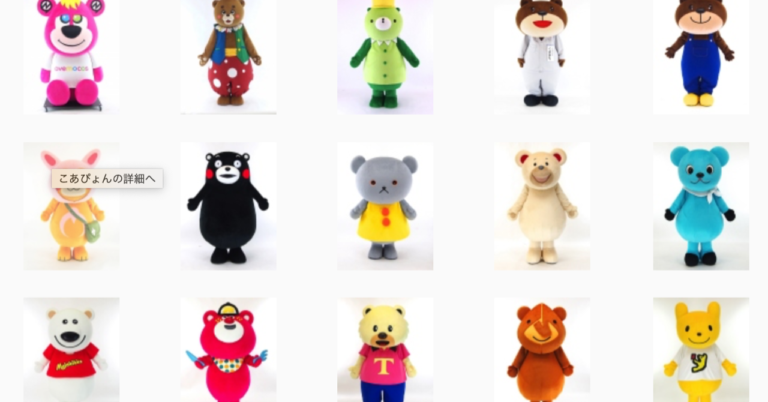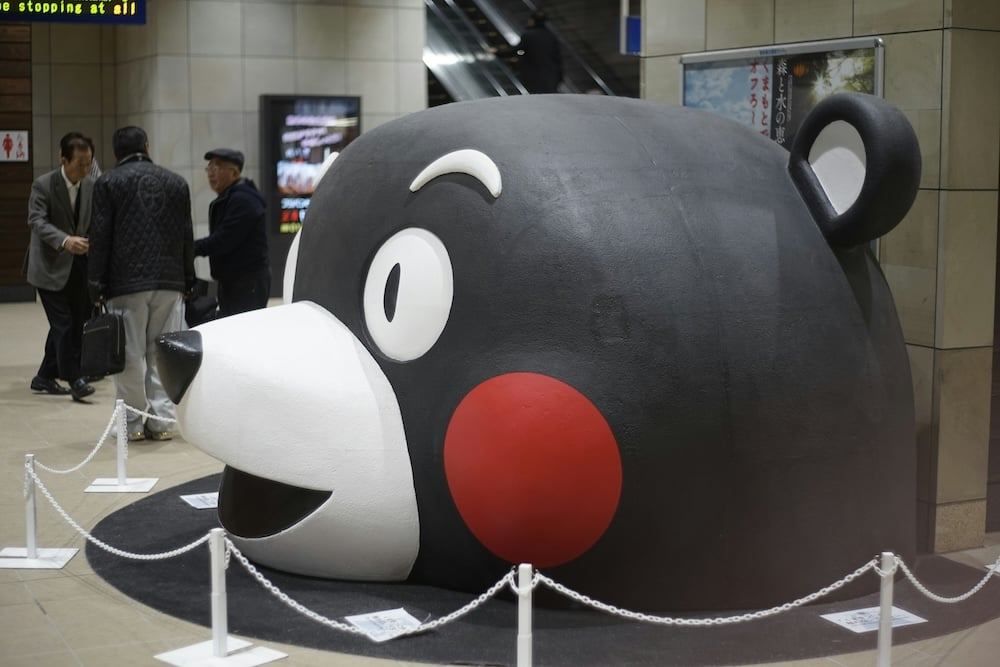
Cute cats wearing samurai headgear, rosy-cheeked bears, giant pears with an affinity for heavy metal… These are just a few examples from the world of Japanese regional characters. Known as yuru-kyara, these whimsical creatures are dreamed up by illustrators in Japan before being voted on to represent their hometown incorporating local goods asuch as food, culture, and places in their designs. What started off as drawings on paper has now become a national phenomenon. Yuru-kyara are a uniquely Japanese way to learn a bit more about prefectures and even specific cities in Japan. But before diving into yuru-kyara, it’s essential to understand Japan’s broader fascination with characters.
Character Culture in Japan
Before diving into yuru-kyara, it’s essential to understand Japan’s broader fascination with characters. Many experts suggest that the current popularity of characters can be traced back to the country’s long history with Shintoism (神道), which maintains that almost everything in this world is associated with or controlled by its own god, or kami (神). Before industrialism and the advent of technology, a god’s domain was usually found in natural or ancient phenomena, such as mountains, rivers, and typhoons, but also royalty, learning and relationships, among others. As the world changed, the variety of gods grew to fit people’s modern lifestyles. Your little sister’s university entrance exam, a promotion at work, and even the toilet in your house can be associated with its own god.
This history as an animist society laid the groundwork for present-day character culture in Japan. In many other countries, promotional materials’ success is achieved through simplicity, sleekness, and its ‘cool’ factor. Attaching a cute mascot to the brand’s image is seen only when targeting specific demographics, usually children. In Japan, this couldn’t be further from the truth. Both children and adults alike are charmed by characters such as Hello Kitty or Pikachu, and they can be seen in advertisements, merchandise, movies, and many other mediums. Both even have their own bullet train, which is decked out in stuffed animals, cozy lounges, and of course everything is a bright shade of pink or yellow.
From local neighborhood shops to national corporations, every business seems to want in on the character craze. Rilakkuma, Anpanman, and Doraemon are just a few more of the many characters you’ll see adorned on everything from erasers to car insurance plans. And it’s not just Japanese characters that are loved in Japan – Snoopy, Winnie the Pooh, Tom & Jerry, and Moomin are everywhere, too. Indeed, one of the most frequently asked questions when I first came to teach English in Japan was, “What character do you like?” Considering the character business market in Japan was estimated at over 17 billion USD in 2022 according to a Statista report, it’s no wonder these cuddly characters are so ubiquitous.

Yuru-Kyara: When Characters Get Personal
Kyara (キャラ) were not always so widespread and lucrative, however. It was mostly in the second half of the 20th century that Japanese character culture boomed. As their success grew, local governments in Japan started to see the benefit of employing their own characters as cute (albeit occasionally bizarre) organizational representatives. In the early 2000s, the term yuru-kyara was coined by illustrator Jun Miura, and in 2007, Hikone city’s very own Hikonyan was so successful that he is widely credited with kickstarting Japan’s “yuru-kyara boom”.
What’s in a Yuru-Kyara?
Yuru-kyara comes from the Japanese words yurui (緩い), which in this context means weak, laid-back, or light-hearted; and kyara/chara (キャラ), which is a shorthand for the word ‘character’ in English. If you think this sounds close to an insult, you’re not entirely wrong. Think about the term ‘laid-back’. On one hand, it can be used to describe someone easy to get along with, but on the other, can also refer to a lack of motivation, complacency, and maybe even missed opportunities. While the name yuru-kyara may have initially had negative connotations, it has since evolved linguistically to drop this association.
True to the name, Miura specified three main requirements for yuru-kyara:
- It must convey a strong message of love for one’s hometown or local region
- The character’s movements or behavior should be unique and unstable or awkward
- The character should be unsophisticated or laid-back (yurui) and lovable
Often, a character is given attributes that mirror a famous local food or place. For example, the samurai helmet-wearing cat called Hikonyan was created by the city government of Hikone, Japan. His headgear is modeled after a samurai helmet currently on display within the castle. In an effort to further appeal to audiences, they might also be featured on television participating in local activities, such as bungee jumping or soaking in a hot spring. Yuru-kyara can also be created as a play on words, as is the case with Kumamon representing the ‘bear’ kanji in Kumamoto (熊本).
Kumamon in the Spotlight
Speaking of Kumamon, it’s worth remembering this character’s name. Wide-eyed and blushing, he has represented Kumamoto prefecture since his creation in 2010, and is widely considered one of, if not the most successful yuru-kyara to date. Following his win of the 2011 yuru-kyara Grand Prix, the Kumamoto branch of the Bank of Japan estimated his economic impact on the prefecture between 2012 and 2013 to be an eye-popping $714 million USD. His adoring fans have only grown since then. He is no longer only found adorning merchandise in his hometown, or even Japan – but also abroad in places like South Korea and China. Indeed, his impact has been so great that, for many people, it’s difficult to imagine a time before Kumamon.
Although relatively recent in Japan’s long history, yuru-kyara are nevertheless a fun and unique way to explore modern Japanese culture. With their unique personalities and endearing quirks, yuru-kyara serve as ambassadors for their hometowns, showcasing the diversity and charm of Japan’s regions. Whether they’re promoting a local vegetable, festival, animal or castle, yuru-kyara continue to enchant audiences, proving that the power of cute characters knows no bounds in the Land of the Rising Sun.















